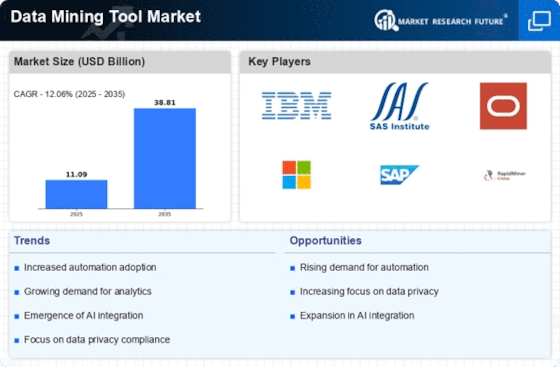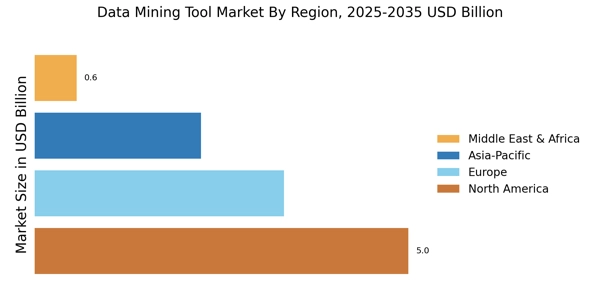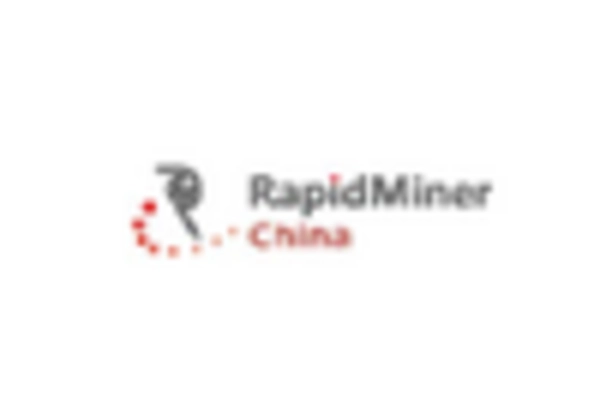The Data Mining Tool Market is currently characterized by a dynamic competitive landscape, driven by the increasing demand for data analytics across various sectors. Key players such as IBM (US), Microsoft (US), and SAS Institute (US) are at the forefront, leveraging their technological prowess to enhance their offerings. IBM (US) focuses on integrating artificial intelligence into its data mining solutions, thereby improving predictive analytics capabilities. Meanwhile, Microsoft (US) emphasizes cloud-based solutions, which facilitate scalability and accessibility for businesses. SAS Institute (US) continues to innovate with advanced analytics tools, positioning itself as a leader in the market. Collectively, these strategies foster a competitive environment that prioritizes technological advancement and customer-centric solutions.
In terms of business tactics, companies are increasingly localizing their operations to better serve regional markets, which appears to enhance customer engagement and satisfaction. The market structure is moderately fragmented, with several players vying for market share. However, the influence of major companies like Oracle (US) and SAP (DE) remains substantial, as they continue to expand their global footprint through strategic partnerships and acquisitions. This competitive structure suggests that while there is room for smaller players, the dominance of established firms shapes market dynamics significantly.
In August 2025, IBM (US) announced a strategic partnership with a leading cloud service provider to enhance its data mining capabilities. This collaboration is expected to streamline data processing and improve the efficiency of analytics solutions, thereby reinforcing IBM's position in the market. The strategic importance of this partnership lies in its potential to offer clients more robust and scalable solutions, aligning with the growing trend towards cloud computing.
In September 2025, Microsoft (US) launched a new suite of AI-driven data mining tools aimed at small to medium-sized enterprises. This initiative reflects Microsoft's commitment to democratizing access to advanced analytics, allowing smaller businesses to leverage data insights for competitive advantage. The strategic significance of this launch is profound, as it not only expands Microsoft's customer base but also positions the company as a leader in providing accessible data solutions.
In July 2025, SAS Institute (US) unveiled a new version of its analytics platform, incorporating machine learning capabilities that enhance data mining processes. This development is crucial as it signifies SAS's ongoing commitment to innovation and its ability to adapt to the evolving needs of the market. By integrating machine learning, SAS aims to provide users with more accurate and actionable insights, thereby solidifying its competitive edge.
As of October 2025, the Data Mining Tool Market is witnessing trends such as increased digitalization, a focus on sustainability, and the integration of artificial intelligence. Strategic alliances among key players are shaping the competitive landscape, fostering innovation and collaboration. Looking ahead, it is likely that competitive differentiation will increasingly hinge on technological innovation and supply chain reliability, rather than merely price-based competition. This shift underscores the importance of adaptability and forward-thinking strategies in navigating the complexities of the data mining landscape.


















Leave a Comment